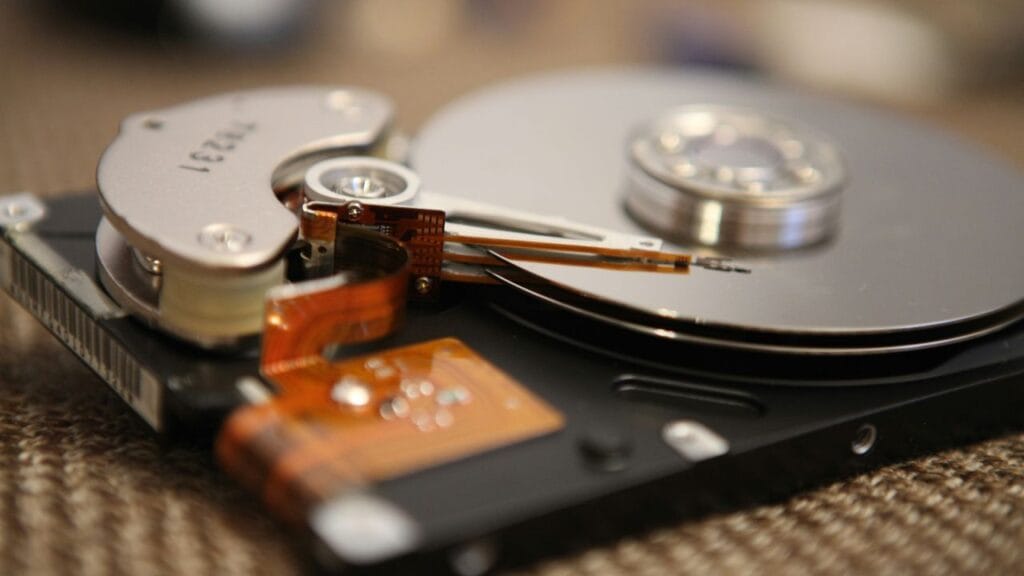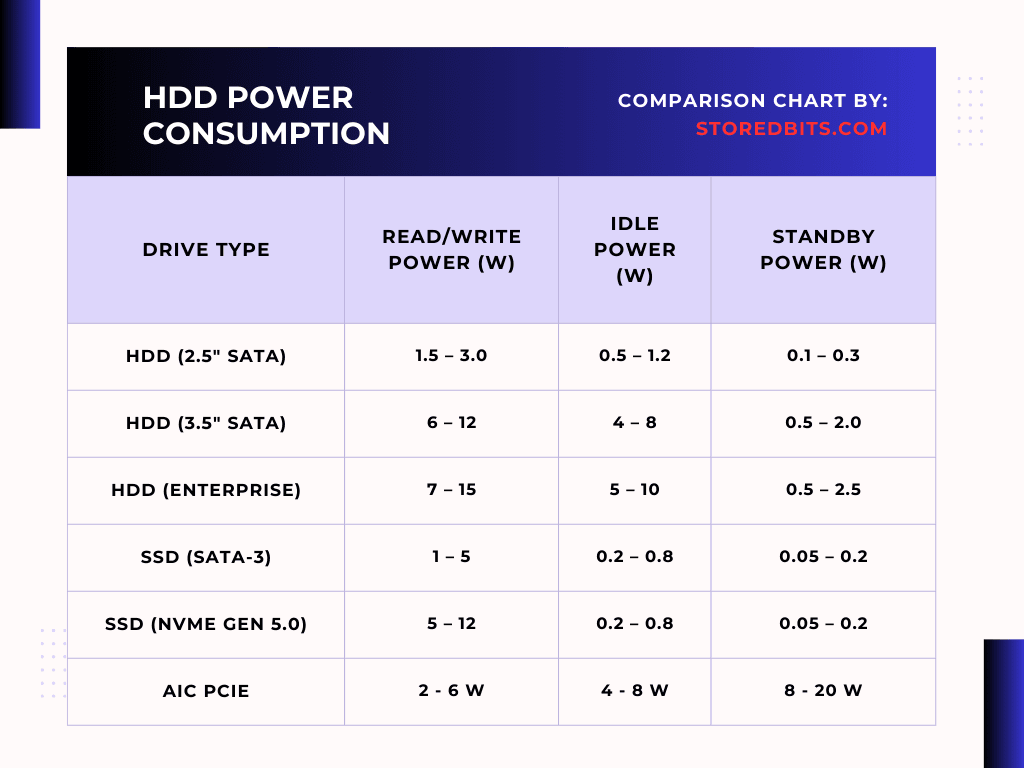Random Access Memory has different variations for different purposes. The main types are DRAM, SRAM, SDRAM, VRAM, and NVRAM. All these RAMs have further types but we will focus on the main types. We will just compare the DRAM (primary memory), SDRAM (Primary Memory sync with system clock), SRAM (Generally used in cache), and VRAM (Graphics Memory) here in this article.
The data in the RAM can be accessed randomly in any order, unlike sequential storage. But, another key feature is RAM loses its data when the power is turned off, except for other RAM variants such as NVRAM and MRAM etc. The four types of RAM that we are discussing lose their data when the power is turned off hence called volatile memory.
RAM is also known for its high bandwidth, throughput, and low latency. I have discussed the work of DRAM in complete detail in this article. In this article, we will know the purposes of these RAM types and their applications. So, let’s get started.
The purpose of RAM in devices
RAM (Random Access Memory) is an integral part of computers, laptops, smartphones, tablets, and all other devices that incorporate a CPU for their operations. RAM can be there inside the CPU in the form of SRAM as a cache. It could be in your graphics card as VRAM. It could be the DRAM modules installed in your computer or laptop. It could be the LPDDR used in mobile devices because of its power efficiency. It could also be the SDRAM being an external RAM but sharing the CPU’s clock.
But, the purpose is almost the same everywhere. RAM provides a perfect balance between low price, high storage capacity, and read/write performance. Now, RAM has many applications in different places.
SRAM, for example, has the highest speed in any type of RAM with the lowest latency. It is used in very small sizes because of its high price as CPU caches and other high-speed buffers. After that, in terms of performance, comes the GDDR and HMB memories which are the types of VRAM. This RAM is used in graphics cards. DRAM and SDRAM have lower speeds than the VRAM which is used as the main memory, generally in the form of DIMM modules. So, RAM can have different purposes and to accomplish them, the manufacturers have done tweaks to the work to get the desired results.
1. What is DRAM (Dynamic Random Access Memory)
The word “Dynamic” in DRAM means that this RAM requires regular refreshing to retain its data. Dynamic RAM is called Dynamic in contrast to Static RAM which doesn’t require refreshing. A single memory cell in DRAM is made up of a combination of a transistor and a capacitor. The capacitor stores the bits in the form of electric charge. A charged capacitor represents the bit value of “1” while a discharged one represents “0”. However, capacitors have an innate tendency to leak this stored charge slowly just after it is charged. So, if we don’t refresh it with the appropriate voltage, it will soon lose its data. The data is refreshed approximately every 64 milliseconds however it can vary depending on the RAM.

Purpose and Deployment of DRAM
DRAM is also known as Asynchronous Random Access Memory and is largely obsolete and has been replaced by the modern SDRAM. Modern computers generally use the SDRAM, particularly DDR SDRAM. But, you can call SDRAM another type of DRAM. DRAM doesn’t synchronize with the CPU’s clock and has its oscillator to generate the clock. Because of this separate clock, the CPU doesn’t align properly in terms of clock frequency with the DRAM.
Types of DRAM
- Asynchronous DRAM (ASDRAM): The original form of DRAM that operates independently of the system clock. It is generally slower and has been largely replaced by synchronous types.
- Fast Page Mode DRAM (FPM DRAM): An enhancement over standard DRAM that allows faster access to data within the same row, improving performance compared to traditional asynchronous DRAM. However, generally not found in any modern systems.
- Extended Data Out DRAM (EDO DRAM): This DRAM allows for faster access than FPM by overlapping the next read cycle with the current one, providing better performance.
- Burst EDO DRAM: An extension of EDO DRAM that can deliver a burst of data quickly, further improving speed and efficiency.
- DDR SDRAM (Double Data Rate SDRAM): The most successful and scalable type of DRAM. This includes several generations (DDR, DDR2, DDR3, DDR4, DDR5, and the upcoming DDR6) and allows data to be transferred on both the rising and falling edges of the clock signal, effectively doubling the data rate.
- RLDRAM (Reduced Latency DRAM): A type of DRAM designed for applications that require low latency, often used in networking and telecommunications.
2. What is SDRAM?
As we discussed earlier, SDRAM is the type of DRAM memory and use the same combination of a transistor and a capacitor for a single memory cell. However, the SDRAM comes with a much more complex and efficient caching and buffering mechanism compared to the normal DRAM. SDRAM can handle data in bursts and work with multiple data requests simultaneously.
You can refer to this paper from HP to understand the SDRAM in a much simpler manner. According to it, “Standard DRAM transfers one data bit to the bus on the rising edge of the bus clock signal, while DDR SDRAM uses both the rising and falling edges of the clock to trigger the data transfer to the bus“
However, if you want to know the workings of SDRAM in detail, this paper from Micron on the DDR4 memory is a great resource.
All in all, the capability of SDRAM to work with the CPU clock and the Double Data Rate makes it successful in its field. By using both the ups and downs of a clock signal, the SDRAM achieves higher bandwidth than the normal DRAM. This is known as double data rate (DDR). For example, if the clock speed is 100 MHz, SDRAM can effectively perform operations at a rate of 200 MHz. The process of pre-charing in SDRAM is also handled by the CPU clock and it plays a very important role in reducing the latency.
Purpose and Deployment of SDRAM
The RAM that we install in our computers as the main memory has a technical name SDRAM. Before the release of SDRAM in 1996, the computers were using the normal Asynchronous DRAM. The SDRAM DIMM modules are employed to work along with the CPU in real-time to store the data and instructions. SDRAM enables quick access and processing because of its low latency and high bandwidth. Although it is slower than the SRAM which is used as a cache in the CPU, it serves perfectly between the Cache and the secondary storage i.e. SSD or HDD. The data required by the CPU is picked from the primary storage and loaded into the SDRAM first. Then, the required data is loaded to the cache and then to the registers for processing. DRAM is volatile but has high performance which makes it best as a temporary memory in computers.
It is easy to get confused between DRAM and SDRAM because we hear people calling the RAM DRAM even though the technical name is SDRAM. In 2024, no modern computer will use the normal DRAM or Asynchronous DRAM because the SDRAM has taken over everywhere.
An Image of DDR3 SDRAM SO-DIMM Module in Laptop:
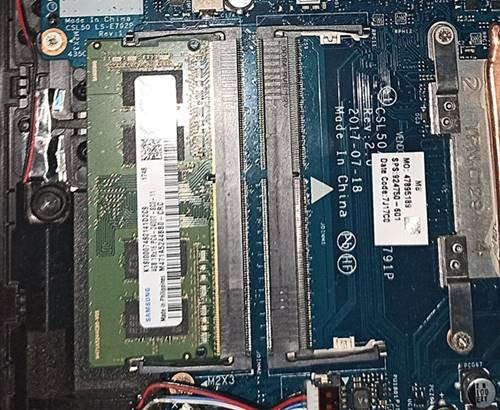
A desktop DDR5 SDRAM module looks like this and has a bigger form factor than the laptop RAM module.

Double Data Rate (DDR) in DRAM
| DDR Variant | Introduced | Data Rate (GB/s) | Typical Frequency (MHz) | Key Features |
|---|---|---|---|---|
| DDR1 | 1996 | Up to 2.1 | 100 – 200 | Basic double data rate; largely obsolete. |
| DDR2 | 2003 | 4.8 | 200 – 800 | Improved performance; lower power consumption than DDR1. |
| DDR3 | 2007 | 6.4 to 17 | 400 – 1600 | Further speed improvements; lower power (1.5V). |
| DDR4 | 2014 | 12.8 to 25.6 | 1600 – 3200 | Significant speed and capacity improvements; more efficient (1.2V). |
| DDR5 | 2020 | 32 and higher | 4800 – 8400 | Double the bandwidth and capacity of DDR4; improved efficiency (1.1V). |
| DDR6 | Expected 2024 | 40 and above | 6400 – 12000 | Enhanced bandwidth and capacity; further power efficiency improvements anticipated. |
With the improving variants of DDR, the performance and data rate of the SDRAM improves. As we discussed earlier, the DDR uses both ups and downs of the clock signal to double the data rate. However, the performance improvements aren’t just limited to the DDR. The maximum clock frequency helps in achieving those high data rates and high performance.
In simple words, the RAM with a clock speed of 4800 MHz is working at just 2400 MHz. The DDR allows it to use the same clock speed for double data transmission. Also, because the CPU’s clock speed is generally very high than the RAM speed, the memory controller co-ordinates the communication. CPUs can execute multiple operations or instructions within a single clock cycle. For example, at 4 GHz, a CPU can execute billions of cycles per second. This allows the CPU to issue multiple requests to RAM, utilizing its ability to manage high-speed operations effectively.
Also, the external RAM or the DIMM module has very low interaction directly with the CPU cores because they interact with their own cache memory (L1, L2, L3). The memory controller on the CPU just makes sure the required data is accessed properly from the RAM utilizing its highest clock frequency.
3. What is SRAM (Static Random Access Memory)?
Static Random Access Memory is another variation of RAM that is volatile in nature but doesn’t need refreshing like DRAM. In SRAM, transistors are used in the form of flip-flops to form memory cells. A single memory cell has 6 transistors in the formation shown below. Although the transistors require constant power to keep working, there is no charge leakage hence the need for a refreshing mechanism. This quality combined with the fast switching of the transistors makes the SRAM the fastest type of RAM in the whole computer system.
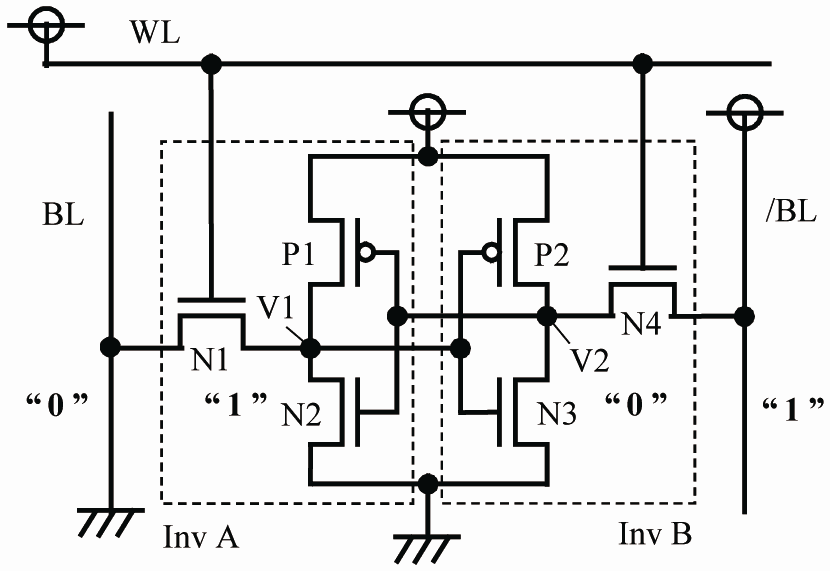
SRAM is called memory but you can consider it as an active circuitry allowing the data to be stored and processed almost instantly. SRAM comes with the least storage density compared to any other type of RAM. Also, it has very high power consumption. But, it comes with the highest levels of reliability and performance.
Purpose and Deployment of SRAM
SRAM is used mostly in CPU cache (L1, L2, and L3) and registers. Also, it is used in buffers in GPUs, modems, network switches, and routers. Some printers may also use SRAM. However, the most significant application of SRAM is largely in computer CPUs. The latency of SRAM can be as low as 1 to 3 nanoseconds. The L1 cache utilizing the SRAM has the best performance and lowest latency.
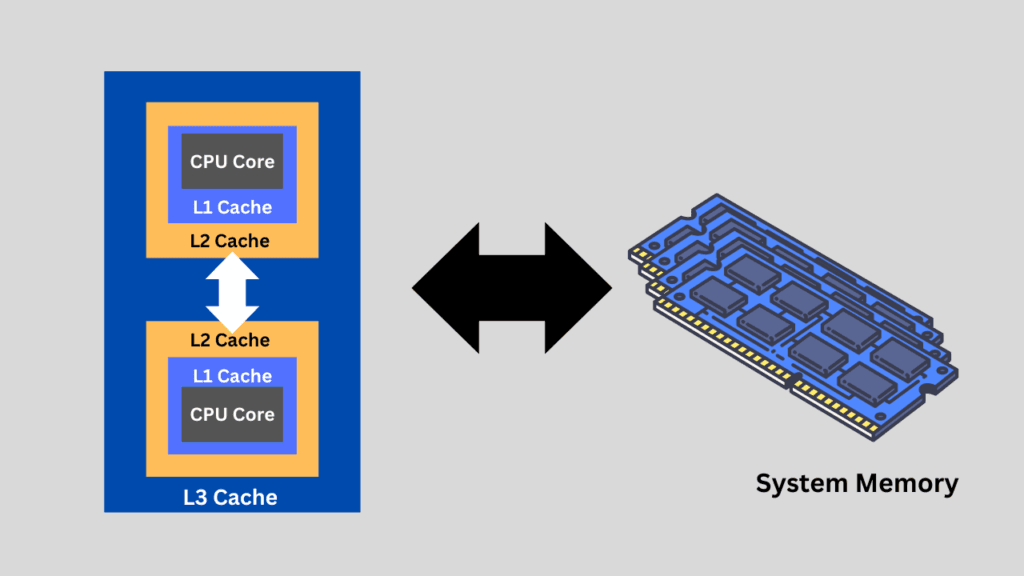
The main purpose of SRAM is to provide ultra-high-speed data access to critical components in different systems including computer CPUs. SRAM is typically used in very small sizes but only at the places where they are necessary to keep the cost in consideration. In simple words, you will find SRAM only where speed and data consistency are critical.
4. What is VRAM (Video Random Access Memory)?
VRAM is technically a type of DRAM but optimized for storing images and video data that the GPU (Graphics Processing Unit) requires for processing different graphics. It has the main job of storing textures, frame buffers, image data, video data, and other graphics-related data. VRAM has the main optimization of higher bandwidth. GPU generally accesses multiple memory parts simultaneously when working on graphics. In simple words, VRAM can be accessed by both the display system and the GPU at the same time and this is the reason we call it dual-ported memory. In this way, the GPU can pick up the next frame while the existing one is read by the display.
Modern VRAM is of two types i.e. GDDR (Graphics DDR) and HBM (High Bandwidth memory). GDDR is single-layered while HBM is stacked or multi-layer memory. GDDR VRAM is primarily used in consumer graphics cards, like the cards from NVIDIA GeForce and AMD Radeon. HBM is utilized in high-end GPUs and data centers. Another application can be found in AI accelerators like NVIDIA Tesla and AMD Radeon Pro. HBM has its main application in various fields of high-performance computing.

The VRAM connects to the GPU through a wide bus (generally 128-bit, 256-bit, or 512-bit) to ensure a fast data exchange. The connection happens via a dedicated bus which is designed for parallel processing and for large data sets. Inside a graphics card, you can see the VRAM connected to the GPU separately to allow higher bandwidth and the lowest latency.
Purpose and Deployment of VRAM
The primary purpose of VRAM is to store graphics-related data. GPUs are good at doing repetitive tasks that are less complex than what the CPU is supposed to do. So, to do its job, it can utilize very high data transmission speeds. VRAM is used to fulfill those demands. You will find the VRAM mostly in Graphics cards (both consumer and enterprise) and integrated GPUs in the CPUs. Game consoles, VR/AR devices, etc. The computers working on AI and Deep Learning also utilize a very high amount of VRAM with powerful GPUs.
Conclusion
To conclude, the DRAM is an old type of RAM variant utilized in older systems as the primary memory. However, with the advent of SDRAM, DRAM got extinct. However, SDRAM itself is a variant of DRAM. The only big issue with these RAMs is that they need constant refreshing because they use capacitors as the storage medium which discharge slowly even if you try to isolate them with the help of a transistor. SRAM is a completely different technology making use of the fast switching of the transistors as the temporary memory. Because there are no capacitors, there is no charge leakage and hence simpler circuitry. Also, because the transistors are used, the data is stored and accessed almost instantly with very low latency reaching almost up to 1 nanoseconds. The VRAM has its application with graphics-related tasks. VRAM is found where very high bandwidth and throughput are demanded. Some key optimizations in the VRAM dual-porting, are high clock speeds, compression techniques, and tiling.
Thanks for reading!


